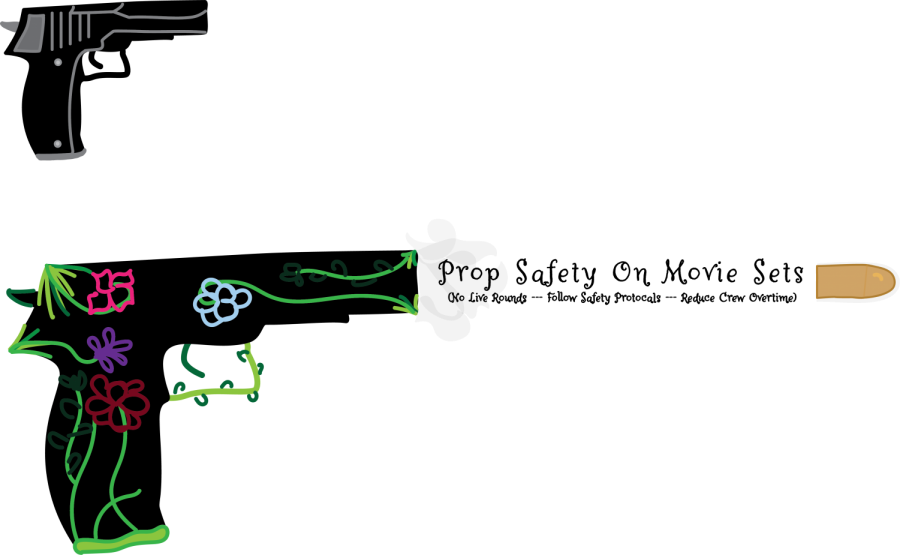Alec Baldwin prop shooting sparks controversy in Hollywood
Many have begun to question the safety of using real firearms on set.
December 22, 2021
The movie industry has been buzzing with attention and concern over what happened on October 21, when actor Alec Baldwin discharged a prop gun on the set of the movie Rust which he was filming in Santa Fe, NM.
The shot fired killed cinematographer Halyna Hutchings and injured director Joel Souza. According to Souza, the prop weapons had been checked before the crew broke for lunch and someone then yelled “cold gun” before passing the prop gun to Baldwin, meaning that the gun had no live rounds.
Even before the fatal accident, problems had already occurred on the set, including two accidental gun discharges according to an LA Times report. Alec Baldwins’s stunt double reportedly fired two rounds after being told the gun was “cold”only days before the fatal shooting occurred. While many may be asking what happened that day, I think the big question is why?
There’s plenty to blame, but somehow, some way, a live round made its way into the chamber of a prop weapon. What is clear however, is that safety procedures were not followed, resulting in the death of one person and injury of another. Moreover, this is not the only time deaths have occurred on a film set because of a prop miscommunication or malfunction. To be clear, I believe that live rounds of ammunition should never have been on the set of the movie and that this accident could have been prevented, had safety procedures been adhered to or had a real weapon not been used.
Because of these kinds of incidents, many are questioning whether real guns should even be used on a set in the first place. Given advances in cinematic technology and special effects, rubber guns should more than suffice as a movie prop. Actor Dwayne Johnson has committed to using only rubber guns and not real guns on the sets of movies produced by his production company Seven Bucks productions. If others in the industry follow Johnson’s lead, perhaps the idea will gain enough traction to become an industry standard. Ultimately, this will save lives and prevent further injuries on the set.
Working conditions and long hours also may have contributed to the tragedy on the set of Rust. Just hours before the fatal shooting, several camera crew workers walked off the set to protest working conditions. Their complaints included long hours, long commutes, and delayed paychecks. While this walk-off may not have been a direct cause of the shooting, it’s clear that long hours and working conditions likely contributed to an environment where policies were not followed, and mistakes were made.
Film crew members are known for spending long working days, as many as 15 to 19 hours a day on set. This is simply too long for a human to function under pressure, especially when lives and safety are at stake. 12 hours on, 12 off should be the standard shift in the film industry. Other industries, such as aviation and trucking do dictate breaks for sleeping and rest between shifts. But on movie sets where prop weapons, stunts and even explosions are taking place, no such mandates exist.
There are several ways to alleviate these safety concerns on film sets. First, the entire industry should move to a 12 hours on, 12 off standard for those working on the set to prevent fatigue and mistakes. In addition, the industry should adopt a standard, mandatory set of safety protocols for stunts, explosions, and weapons effects. Finally, real weapons should not be used. Without action on this issue, more preventable tragedies will occur.
Some argue that such mandatory safety protocols are expensive and unnecessary. Moreover, they would place a larger burden on low budget, independent films. However, cutting corners when it comes to safety can have horrific repercussions. Movie productions should focus not only on the production of the movie but also their actors’ safety and safety on the set in general.










